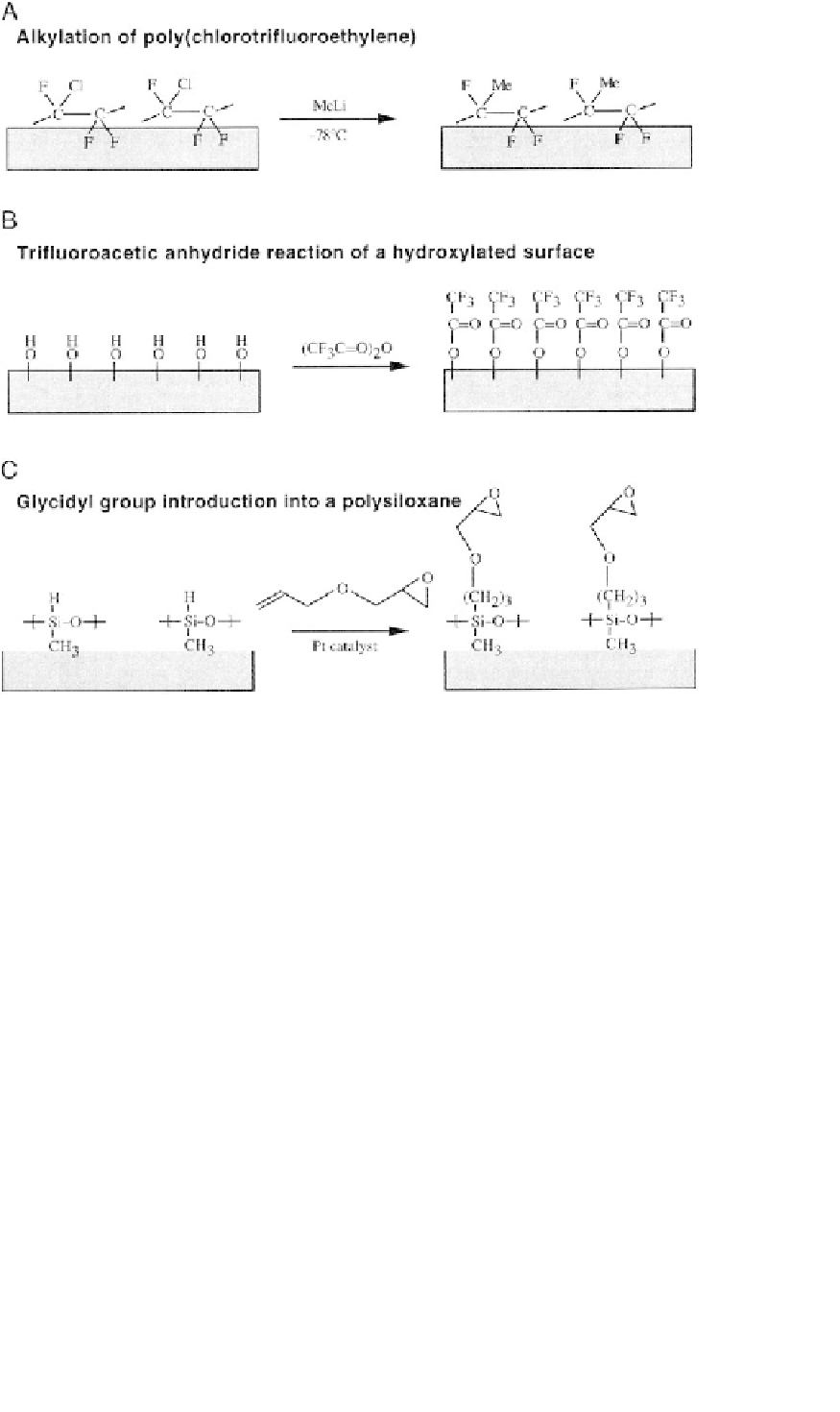Biomedical Engineering Reference
In-Depth Information
Fig. 3.2.14-3 Some specific chemical reactions to modify surfaces.
(see Section 3.2.9). An example of thermal spray coating
on titanium is seen in Gruner (2001).
of adsorbed surface water), a structure similar to that
shown in
Fig. 3.2.14-4
can be formed. However, if more
water is present, a thicker silane layer can be formed
consisting of both Si-O groups bonded to the surface and
silane units participating in a ''bulk'', three-dimensional,
polymerized network. The initial stages in the formation
of a thicker silane film are suggested by the further re-
action of the group at the right side of
Fig. 3.2.14-4
D with
solution-phase silane molecules. Without careful control
of silane liquid purity, water concentration, and reaction
conditions,
Silanization
Silane treatments of surfaces involve a liquid-phase
chemical reaction and are straightforward to perform and
low cost. A typical silane surface modification reaction is
illustrated in
Fig. 3.2.14-4
. Silane reactions are most often
used to modify hydroxylated surfaces. Since glass, silicon,
germanium, alumina, and quartz surfaces, as well as many
metal oxide surfaces, are rich in hydroxyl groups, silanes are
particularly useful for modifying these materials. Numer-
ous silane compounds are commercially available, permit-
ting a broad range of chemical functionalities to be
incorporated on surfaces (
Table 3.2.14-4
). The advantages
of silane reactions are their simplicity and stability, attrib-
uted to their covalent, cross-linked structure. However,
the linkage between a silane and an hydroxyl group is also
readily subject to basic hydrolysis, and film breakdown
under some conditions must be considered (Wasserman
et al.,
1989).
Silanes can form two types of surface film structures. If
only surface reaction occurs (perhaps catalyzed by traces
thicker
silane
films
can
be
rough
and
inhomogeneous.
A new class of silane-modified surfaces based upon
monolayer silane films and yielding self-assembled, highly
ordered structures is of particular interest in precision
engineering of surfaces (Pomerantz
et al.,
1985; Maoz
et al.,
1988; Heid
et al.,
1996). These self-assembled
monolayers (SAMs) are described in more detail later in
this section.
Many general reviews and basic science studies on sur-
face silanization are available (Arkles, 1977; Plueddemann,
1980; Rye
et al.
, 1997). Applications for silanized surface-
modified biomaterials are on the increase and include cell
attachment
(Matsuzawa
et al.
,
1997;
Hickman
and






